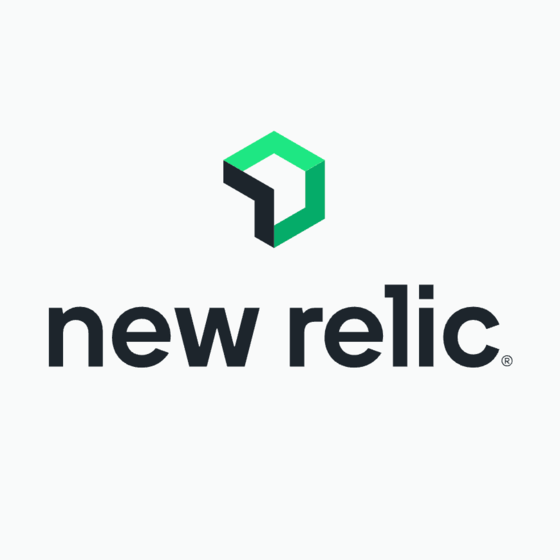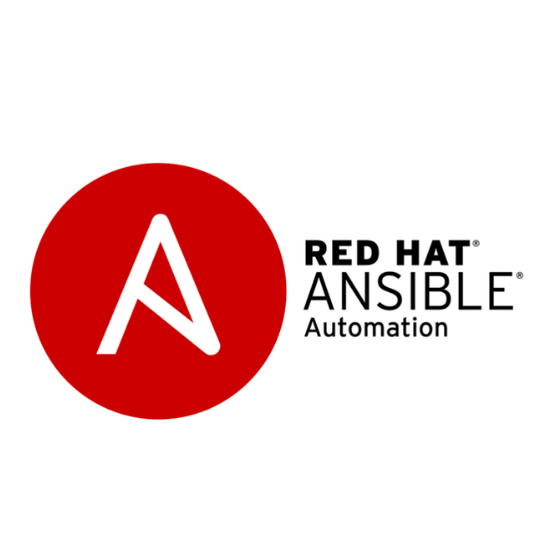10 Best Enterprise Configuration Management Tools Shortlist
Here's my pick of the 10 best software from the 20 tools reviewed.
Our one-on-one guidance will help you find the perfect fit.
In the past, system administrators managed configuration manually. At the enterprise scale, manual configuration management is laborious, time-consuming, and expensive. Due to the complexity of enterprise IT infrastructures, organizations rely on enterprise configuration management tools to monitor and ensure IT systems are properly configured to the correct specifications.
Configuration management solutions help you adhere to best practices, keep the integrity and consistency of your systems, check misconfiguration or duplication of rules, and prevent downtimes. Ditch the manual grind! Find the perfect solution to ensure consistent IT infrastructure and boost your team's efficiency.
What Are Enterprise Configuration Management Tools?
Enterprise configuration management tools are designed to enable development and operations teams to track and control changes made to enterprise IT infrastructures, both hardware and software. These tools help organizations ensure best practices, quality, and compliance are maintained. Enterprise configuration management systems come with a wide range of capabilities, including version control, enforcement, change control, and abstraction.
The Best Enterprise Configuration Management Tools Summary
| Tool | Best For | Trial Info | Price | ||
|---|---|---|---|---|---|
| 1 | Best for monitoring device configuration drift | Free trial + demo available | Pricing upon request | Website | |
| 2 | Best for real-time configuration change tracking | Free plan + demo available | Pricing upon request | Website | |
| 3 | Best for multi-tenant network management | Free demo available | Pricing upon request | Website | |
| 4 | Best tool for feature management | 30-day free trial + free version available | From $33/seat/month | Website | |
| 5 | Best for auditing and enforcing compliance | Free demo available | Pricing upon request | Website | |
| 6 | Best for feature management and release orchestration | Free demo available | Pricing upon request | Website | |
| 7 | Best for automating software deployment and orchestrating advanced workflows | Not available | Pricing upon request | Website | |
| 8 | Best for incident and change management | Free demo available | Pricing upon request | Website | |
| 9 | Best for simplified configuration management in the cloud | Free trial + demo available | Pricing upon request | Website | |
| 10 | Best for meeting compliance requirements | Not available | Pricing upon request | Website |
-

Docker
Visit WebsiteThis is an aggregated rating for this tool including ratings from Crozdesk users and ratings from other sites.4.6 -

Pulumi
Visit WebsiteThis is an aggregated rating for this tool including ratings from Crozdesk users and ratings from other sites.4.8 -

GitHub Actions
Visit Website
Overviews Of The 10 Best Enterprise Configuration Management Tools
Here’s a brief description of each enterprise configuration management tool that showcases each software’s best use case, outstanding features, and some pros and cons. I’ve also included screenshots to give you a snapshot of their user interface.
Site24x7 is a cloud-based monitoring platform designed to help enterprises manage the health, performance, and security of their IT infrastructure. Its network configuration management (NCM) feature helps organizations proactively track, audit, and restore device configurations to maintain operational stability.
Why I picked Site24x7: I picked Site24x7 for its robust network configuration management capabilities that make it easy to detect unauthorized changes, automate backups, and restore prior configurations when needed. This is crucial for enterprises managing complex, distributed networks where misconfigurations can lead to costly downtime or security vulnerabilities. Additionally, Site24x7 stands out with its centralized dashboards for monitoring compliance, firmware vulnerabilities, and configuration drift—features that make day-to-day management more proactive and less reactive.
Site24x7 Standout Features and Integrations
Standout features: Beyond NCM, Site24x7’s infrastructure monitoring spans servers, cloud services, and applications, helping you monitor your full IT stack from a unified console. Its AIOps functionality provides anomaly detection and alerting to catch issues before they escalate, while real-time dashboards simplify oversight of network health and compliance. The platform also automates configuration backups and offers granular comparison tools to detect deviations between versions, streamlining both compliance and disaster recovery efforts.
Integrations include ServiceNow, PagerDuty, Jira, Microsoft Teams, Slack, Nagios, AWS, Azure, Google Cloud Platform, Docker, Jenkins, and Kubernetes.
Pros and cons
Pros:
- Monitors a wide range of services, including websites, servers, and cloud resources
- Proactively detects connectivity issues
- Various alert methods, including email, SMS, and automated calls
Cons:
- Excessive alerts during larger outages
- Advanced monitoring features can be seen as pricey
New Product Updates from Site24x7
UK Data Center Launch by Site24x7
Site24x7 has launched a UK data center, enabling users to migrate workloads for better connectivity, lower latency, and data residency compliance. More details are available at Site24x7.
New Relic is a comprehensive observability platform that helps you monitor, debug, and improve your entire software stack. By providing real-time insights into applications and infrastructure, it enables teams to identify and resolve issues swiftly.
Why I picked New Relic: New Relic's change tracking feature makes it an excellent enterprise configuration management tool. This feature lets you monitor and track updates to software environments in real-time, including changes to applications, infrastructure configurations, and code deployments. By correlating performance data with these changes, your team can quickly pinpoint the root cause of any issues resulting from specific updates, ensuring stability and minimizing downtime.
New Relic Standout Features and Integrations
Standout features: In addition to change tracking, New Relic's robust monitoring and alerting capabilities are vital for configuration management. It provides continuous visibility into your systems and detects anomalies or performance issues caused by configuration changes. The platform also offers synthetic monitoring, which simulates user interactions to test application performance and availability, helping you identify issues before they affect users.
Integrations include AWS, Microsoft Azure, Google Cloud Platform, Kubernetes, Docker, Jenkins, PagerDuty, Slack, Terraform, Atlassian Jira, GitHub, GitLab, and CircleCI.
Pros and cons
Pros:
- Wide range of integrations with cloud platforms and development tools
- Real-time change tracking
- Provides comprehensive visibility into application performance
Cons:
- Dashboards may require customization for specific use cases
- Learning curve for new users
BackBox provides network and security device automation capabilities that allow you to automate configuration management, device backups, OS updates and security patching, and more. It enables you to manage tedious, time-consuming tasks like keeping track of serial numbers, licenses, device types, and versions.
Why I picked BackBox: I added this tool to my list because it’s very easy to use. It offers automation features that enable you to automate and audit tasks seamlessly. This is made possible by a library of more than 3,000 pre-built automations that enable you to get started quickly. If you want to build new automation or modify existing ones, BackBox has a no-code, scripting-free way to build new automation templates.
It supports over 180 vendors and thousands of devices. Being a scalable platform, it’s designed to help you automate the configuration management of enterprise and service provider infrastructures.
BackBox Standout Features and Integrations
Standout features include multi-tenancy, diverse deployments, centralized device management, automated disaster recovery, access management, and customized network reporting.
BackBox allows multiple deployments; you can deploy it on-premise, in the cloud, or as a service. It provides an advanced system feature that lets you keep track of your activities. The tool allows you to generate customized reports, which are useful for drawing insights and making data-driven decisions.
Integrations include Device42, MySQL, Symantec Endpoint Protection, Sophos Email, Centerity, Gigamon, Citrix Gateway, NetWitness, Aruba Cloud, AppWall, and AlgoSec.
Pros and cons
Pros:
- Thousands of pre-built automation
- Easy-to-use IT automation tool
- Scalability
Cons:
- Usage of the GUI can be cumbersome
- Script tracking and error debugging are complicated
It’s an advanced feature management software, offering feature flag management, software experimentation, and continuous delivery.
Why I picked Split: It stands out with the feature flagging capability, which helps you accelerate deployments without compromising safety. The tool allows you to decouple deploy from release with feature flags so you can speed up testing and deployments without negatively impacting your core infrastructure. It’s designed to combine speed and safety, enabling you to make changes confidently without the fear of causing incidents, outages, or costly rollbacks.
Split Standout Features and Integrations
Standout features include feature observability, data-driven innovation, and enterprise readiness. Split’s feature observability empowers you to monitor features and to get alerted when there is an issue. Alerts point you directly to the features in question, enabling targeted issue resolution.
Split uses high-quality data to let you know what works, helping you make better product decisions, learn from actionable metrics, and improve or add features without disrupting the development process. Split makes enterprise readiness a reality by providing security, reliability, workflow management, advanced automation, and governance and data privacy.
Integrations include AppDynamics, Azure DevOps, Datadog, Jira Cloud, Librato, New Relic, Papertrail, Rollbar, ServiceNow, and Slack.
Pros and cons
Pros:
- Provides accurate data for better decision-making
- It’s scalable and flexible
- Very fast and safe feature management
Cons:
- Getting started can be a bit complex for new users
- The reporting feature needs to be improved
This enterprise configuration management system is designed to help you assess, audit, and evaluate your configurations. AWS Config provides the tooling you need to continually monitor and document resource configuration changes.
Why I picked AWS Config: I selected AWS Config because it enables you to ensure your system configurations are compliant with regulatory standards and your organization’s policies. It simplifies operational troubleshooting, enabling you to keep track of configuration changes and figure out issues quickly and easily.
The software allows you to streamline change management, deploy a compliance-as-code framework, and continually audit security monitoring and analysis. It provides a detailed configuration history. At any time, you can access details of changes to your resources at any point in the past. Configuration history helps you make better decisions and track issues faster when things go wrong.
AWS Config Standout Features and Integrations
Standout features include resource relationship tracking, configurable and customizable rules, extensibility, and a cloud governance dashboard.
AWS Config identifies, maps, and keeps track of AWS resource relationships in your account. It provides pre-built rules, which you can customize to evaluate your AWS resource configurations and configuration modifications. With third-party integrations, you can seamlessly expand its capabilities. AWS Config stands out with its visual dashboard, which helps you identify non-compliant resources and provides the insights you need to implement a remediation measure.
Integrations include SAS Visual Analytics, Zluri, Virtual Days, Virima, Sagicc, Alert Logic MDR, Sectona Security Platform, JupiterOne, Secureframe, and Strike Graph.
Pros and cons
Pros:
- Visual dashboard for monitoring resources
- Free AWS training
- It’s very extensible
Cons:
- Customer service should be faster
- Pricing isn’t straightforward
CloudBees is a software delivery system designed to enable you to build and deploy software reliably, maintaining compliance and adhering to best practices. The tool helps you manage configurations efficiently, thereby reducing risk, optimizing software delivery, and boosting innovation.
Why I picked CloudBees: It has outstanding analytics that provide a single source of truth for real-time visibility. The tool gives you access to comprehensive pipeline visibility, release command center, workload insights, and other important metrics. CloudBees comes with customizable dashboards and reports that furnish you with the insights you need to plan, schedule, audit, and track configurations across your pipelines, releases, and deployments.
CloudBees Standout Features and Integrations
Standout features: CloudBees’ capabilities include feature management, release orchestration, continuous integration, continuous delivery, and value stream management.
The feature management capability allows you to release, control, and measure features at scale. Feature management lets you deliver new features progressively and effectively with less risk. With release orchestration, you get access to real-time visibility into your software delivery stack. Release orchestration allows you to view dependencies across the stack, track progress in real time, streamline governance and compliance, and accelerate testing.
Integrations include CodeShip, Assembla, SpecFlow, Qualiti.ai, Synopsys Seeker, Kiuwan Code Security, Mend.io, Auth0, and JupiterOne.
Pros and cons
Pros:
- An all-in-one tool featuring a range of capabilities
- Access to real-time visibility
- Customizable reports and dashboards
Cons:
- The workflows need more customization
- Steep learning curve
Best for automating software deployment and orchestrating advanced workflows
Red Hat Ansible Automation Platform is an automation system designed to help enterprises configure systems, ship software, and facilitate advanced workflows. It provides the tooling your team needs to establish and keep desired configuration states across all your enterprise systems.
Why I picked Red Hat Ansible Automation Platform: This configuration management system enables you to execute automation faster. It gives you access to more than 140 certified and validated content collections from over 60 industry partners. These content collections help you automate common configuration management tasks quickly with minimal hassle.
The tool fosters collaboration among team members. There is a shared language and standardized framework that boosts collaboration between your IT operations teams and developers. It allows teams to increase productivity and efficiency by sharing configuration management resources.
Red Hat Ansible Automation Platform Standout Features and Integrations
Standout features: Red Hat Ansible Automation Platform lets you measure performance and monitor drift. It offers full visibility into the performance of your automation. Keep an eye on configuration drift and use Event-Driven Ansible to resolve issues before they impact your systems.
Red Hat Ansible Automation Platform enables you to manage compliance through consistency, respond to issues quickly, and ensure resiliency. It provides the visibility you need to ensure your automation is implemented properly and consistently across multiple platforms.
Integrations: It lets you integrate with cloud providers, DevOps tools, and security systems. Integrations include OpenStack, Google Cloud Platform, AWS, Atlassian, Splunk, Datadog, Fortinet, Palo Alto, CyberArk, and Juniper.
Pros and cons
Pros:
- Good customer support
- Extensive integrations
- Improved collaboration among teams
Cons:
- Product trial conditions aren’t simple
- Limited workflow customizations
ServiceNow IT Service Management helps you offer resilient services, create great experiences for your employees, and make digital transformation a reality with future-proof, cloud-based capabilities. IT Service Management (ITSM) enables you to optimize processes, build new value with high-end technologies, and achieve better work outcomes with the help of real-time data.
Why I picked ServiceNow IT Service Management: It furnishes you with real-time data, which enables you to understand what’s going on in your systems so you can make data-driven decisions. With the high-quality insights you get, you can optimize service operations across the entire enterprise.
It also helps you get things done faster and better with AI-powered workflows. The tool offers intelligent automation that empowers you to monitor operations and manage configurations with minimal human involvement.
ServiceNow IT Service Management Standout Features and Integrations
Standout features: ServiceNow ITSM streamlines infrastructure management with modern mobile experiences. Keep users in the loop and engaged all the time with intuitive apps for mobile devices, fostering a people-first approach to IT service management.
ServiceNow ITSM's advanced capabilities include knowledge base management, incident management, and change management. Knowledge base management makes seamless knowledge sharing and collaboration possible, while you can bring back services faster with powerful incident control capabilities.
Integrations include Zoom, TeamViewer, Asana, Goto Meeting, Rippling, Box, Smartsheet, Tableau, TeamSupport, and Envoy.
Pros and cons
Pros:
- Knowledge sharing and improved collaboration
- Real-time visibility
- High-level security
Cons:
- The reporting features need to be improved
- A more comprehensive knowledge base needed
Best for simplified configuration management in the cloud
This enterprise configuration management tool provides automation capabilities that help you simplify cloud management. Azure Automation & Control empowers you to control hybrid environments, integrate management systems, and keep track of Windows and Linux systems.
Why I picked Azure Automation & Control: I included Azure Automation because it’s cost-effective. It enables you to save time and lower overhead costs. With this tool, you can seamlessly automate repetitive, time-consuming, and error-prone cloud management tasks. It frees your teams, enabling them to focus on more productive tasks instead of spending hours on frequent manual tasks.
Azure Automation & Control Standout Features and Integrations
Standout features: Azure Automation & Control allows you to update Windows and Linux systems across hybrid environments. You can keep tabs on update compliance across Azure, on-premises, and other cloud services for Windows and Linux. It streamlines configuration management. It lets you automate configuration management tasks, such as automatically updating machine configuration across your cloud or on-premises infrastructures.
It comes with rich reporting, which helps you to collect inventory and track changes. This gives you access to detailed information on your configurations. There are diagnostics and alerting systems you can turn on to help you monitor unwanted changes.
Integrations. It lets you integrate with other third-party services you’re using. Key integrations include Audit Prodigy, Supportbench, Open eLMS, eTrainCenter, MailMeter, Azure Backup, PowerShell, Smart IVR, Cyral, and AgileWare.
Pros and cons
Pros:
- Seamless integrations
- It improves efficiency and lowers overhead costs
- It reduces errors
Cons:
- Sophisticated configurations
- Takes time to learn
IBM Rational ClearCase is a configuration management platform built to help enterprises manage access to software assets. The configuration management system helps you monitor and manage IT assets, such as code requirements, models, design documents, test plans, and test results.
Why I picked Rational ClearCase: It provides the tooling that helps you manage your IT systems with maximum efficiency. Rational ClearCase lets you work quickly and independently by offering development and integration models, private workspaces, and public integration areas. It gives you control over your workflows, enabling you to control development activity efficiently.
It comes with advanced security and compliance features. It saves you from administrative difficulties and enables you to meet compliance requirements easily. The tool features user authentication and audit trails, which make meeting compliance standards a lot easier.
Rational ClearCase Standout Features and Integrations
Standout features: One of the features that set Rational ClearCase apart is version control. It has version management capabilities that allow you to get rid of previous versions, create and delete branches, list version histories, and compare and merge versions. The software also comes with security version management and IP protection.
With Rational ClearCase, you enjoy improved time to value. It’s designed to help you avoid costly mistakes, reduce defects or misconfigurations, and spot and resolve bugs earlier. It offers process control and traceability for compliance, which enables you to streamline routine tasks and properly reproduce versions.
Integrations include Apex, ClearQuest, ClearDDTS, PurifyPlus, Rose, RequisitePro, and Rose RealTime.
Pros and cons
Pros:
- Improved time to value
- Streamlined workflows
- Flexible and scalable
Cons:
- More workflow customization required
- New users have high-level technical things to learn
Other Options
Here is an additional list of enterprise configuration management software to check out:
- Hashicorp Terraform
Tool for managing Kubernetes configurations
- Bamboo by Atlassian
Configuration management software with built-in disaster recovery capabilities
- Progress Chef
Configuration management tool for multi-OS infrastructures
- Octopus Deploy
For DevOps automation
- GitHub
For automating your build, test, and application deployment workflow with secure CI/CD
- Codenvy
For version control and issue management
- Opsera
For CI/CD pipeline automation and performance insights of computer systems
- Puppet Enterprise
Software configuration management (SCM) tool for managing complex configurations and maintaining compliance
- TeamCity
For DevOps-centric teams
- SaltStack
Event-driven automation tool and framework for configuring and managing complex IT systems
Other Testing Software
Here are some software testing tools reviews you should check out:
- Best Open-Source Tools for Test Management
- Best End-to-End Testing Tools
- Best Performance Testing Software
- Best Test Management Tools for Jira
Selection Criteria for Enterprise Configuration Management Tools
Here’s a summary of the main selection and evaluation criteria I used to develop my list of the best enterprise software configuration management tools for this article:
Core Functionality
Here are the basic functionalities I considered when I was evaluating enterprise configuration management tools for this article:
- Multi-environment capabilities
- Streamlined or centralized configuration management
- Security and compliance
- Multi-vendor support
Key Features
I picked tools that come with the following key features:
- Feature management: Feature management enables you to release, control, and measure features.
- Analytics: This provides insight into your configuration files, tells you the state of your infrastructure, and reveals gaps in your configurations.
- CI/CD configuration management: A capability that enables you to configure and maintain your CI/CD pipelines in the desired state.
- Version management: Version management helps you keep track of source code changes and configurations.
- Task scheduling: This feature comes into play when you want to schedule some configuration management tasks. With task scheduling, you can automate tasks and set them up to run any time you want.
Usability
I recommended tools that are easy to use. In the course of my research, I considered key usability factors, such as intuitive user interface, comprehensive documentation, responsive customer service, user community, and tutorials.
Software Integrations
I picked configuration management solutions that allow you to integrate other tools. You can connect with cloud providers, DevOps tools, virtualization software, and software development programs.
Pricing
I considered transparency and value for money. They come with a free trial or free demo to help you get a feel of the program before committing your money. I also looked out for tools that offer free plans. This helps you to confirm features before going for the premium packages.
People Also Ask
Some of the frequently asked questions that might be helpful:
What is configuration management?
Configuration management is the process of keeping track of your IT system’s configurations. It involves keeping computer systems in a desired state. Configuration management is also the practice of ensuring that configurations are maintained and systems perform as expected or configured over time.
What are the benefits of enterprise configuration management tools?
The advantages of enterprise management programs include quick disaster recovery, improved uptime and site reliability, scalability, enhanced visibility, better communication, and improved resource usage.
Who uses enterprise configuration management tools?
The users of enterprise configuration management solutions include system administrators, software developers, QA professionals, and software engineers in general. That being said, the position or title of people who use configuration management tools differs from organization to organization.
Final Thoughts
Choosing the right enterprise configuration management software for your company can be challenging due to the many tools available on the market. But having done the heavy lifting for you, you don’t have to spend many hours evaluating tools online. Go through the 20 programs I’ve recommended to find the one that suits your operating systems, cloud providers, budget, and other important factors.
Do you want to learn more about software testing tools? Join The QA Lead newsletter for fresh articles, how-to guides, podcasts, tool reviews, updates, and expert insights from leaders in the QA industry.























